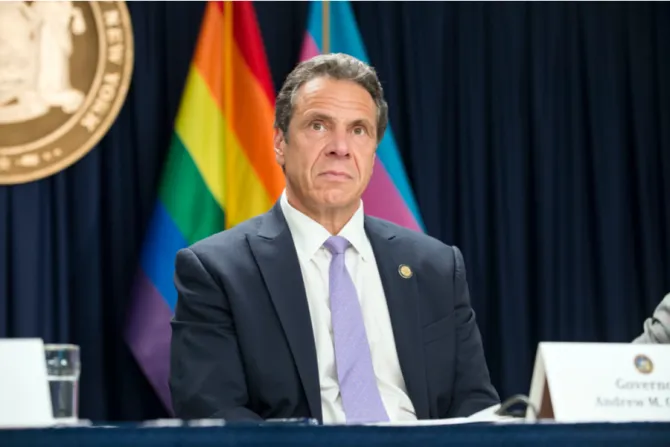CNA Staff, Aug 5, 2020 / 12:10 pm
New York governor Andrew Cuomo on Tuesday signed a bill Tuesday partially reversing immunity protections given to facilities like nursing homes against lawsuits during the coronavirus pandemic.
The new law keeps in place immunity for healthcare staff and facilities in cases directly related to COVID-19 care, but removes the legal protections for preventative COVID-19 care and the arrangement of health care services for patients.
In May, Cuomo had signed into law a provision granting broad legal immunity for health care providers during the coronavirus pandemic, including in cases not related to COVID, unless the harm done to patients was due to criminal negligence or recklessness. The provision was included as a part of a larger budget bill.
Cuomo's office told the New York Times in May that the provision was to enable hospitals, nursing homes, and staff to respond to the pandemic without having to fear a flood of lawsuits.
On Tuesday, Cuomo signed bill S8835, which curbed the previously broad grant of immunity, limiting it "to health care professionals that are providing diagnosis and treatment of COVID-19 directly to confirmed and suspected COVID-19 patients." It also removed legal protection against lawsuits for any care that is part of "prevention" of COVID or of "arranging for" health care services.
New York's COVID case count and death count has dropped significantly since its peak in mid-April, when 1,003 new deaths were reported on April 14, and 11,755 new cases were reported on April 15, according to data from the New York Times. On August 4, only 746 new cases and nine new deaths were reported in the state.
Some of the worst COVID-19 outbreaks in the U.S. have occurred in nursing homes and long-term care facilities, which have accounted for a significant portion of the coronavirus deaths nationwide.
The New York Times reported on July 30 that nursing homes and long-term care facilities had accounted for just 8% of COVID cases in the U.S., but more than 40% of COVID deaths nationwide.
At a single health care center in Queens, New York, there have been 82 reported COVID deaths, although that number has not increased since May, according to data from the state's health department.
Confirmed COVID deaths at nursing homes number 459 in Queens and 556 in Suffolk County, a slight increase from May numbers of 432 deaths in Queens and 489 in Suffolk.
Early in the pandemic, New York was one of several states that ordered nursing homes to accept COVID patients who had the virus but were discharged from hospitals as stable. The policy was issued amid widespread concern that hospital bed capacities would not be able to keep up with the number of patients with severe cases of the virus.
In May, the state rescinded the policy, which was criticized by some advocates for fueling the high rate of COVID deaths in New York nursing homes. Dr. Charles Camosy, a professor of ethics at Fordham University, said that the policy helped to "create an uncontrollable wildfire of infection and death" at nursing homes.
Cuomo had granted immunity from lawsuits for health care facilities as part of the state's budget bill he signed into law in May.
According to data from the Centers for Medicare & Medicaid Services (CMS), there have been more than 40,000 COVID-19 deaths in nursing homes, with more than 150,000 confirmed cases and more than 96,000 suspected cases.
Nursing homes in northeastern states have been hit particularly hard, with Massachusetts seeing the highest rate of more than 120 COVID deaths per 1,000 residents. New Jersey has the second-highest rate with more than 116 deaths, with Connecticut at just more than 100. New York has a rate of 46.8 COVID deaths per 1,000 residents.


